A good friend from Hangzhou recently contacted me regarding a Chinese coin he was interested in purchasing. It was a beautiful but rather expensive Szechuan coin (¥100,000 RMB or about $16,400 USD at the time of writing), and he was unsure about the deal.
The Szechuan dollar my friend was considering to buy was a high grade sample of the rare “库 not connected” variety (四川光绪剑毛龙无头车). It had sharp details and was graded AU50 by NGC, however the coin had clearly been cleaned and my friend hoped for a discount.
I browsed past sales results when I was struck by the similitude between the coin my friend coveted and a Szechuen dollar sold at the Jiuzhou 2012 Summer Auction (九州2012夏季机制币、纸币拍卖专场). At first, I thought that the coin graded XF details by PCGS had been re-submitted to NGC in a bid for a more favorable grade, but I quickly verified that the coins’ obverse were distinct.
While carefully examining the reverse, I was troubled to find an identical scratch below the right side rosette. Despite the low resolution of the pictures sent by my friend, it was obvious this ought to be a circulation mark. Two coins of the same type often exhibit wear or weak strike in the same place, but identical circulation marks should never be observed: it would indeed imply both coins were randomly damaged in the exact same fashion while being handled by countless men and women through a century!
The scratches I highlighted on the picture above were damning evidences that both coins were very high level forgeries. The counterfeiters went to the trouble of striking different obverses, but were surprisingly lazy etching the same marks on the reverse. The replica is still stunning, and actually fooled two world-class grading agencies and the highly experienced Chinese coins collectors who bought them. It is especially troubling that without the inexplicable laziness of the counterfeiters, and a stroke of luck comparing pictures on the Internet, both fake coins would have most likely stayed undetected.
Once again, I will urge my dear readers to listen to their instinct when buying: if you are somehow hesitant about a deal, like my friend was, the best decision is often to walk away. It is also best to avoid buying cleaned or polished coins altogether, especially in high grade, as it is too convenient a camouflage for artificial aging.
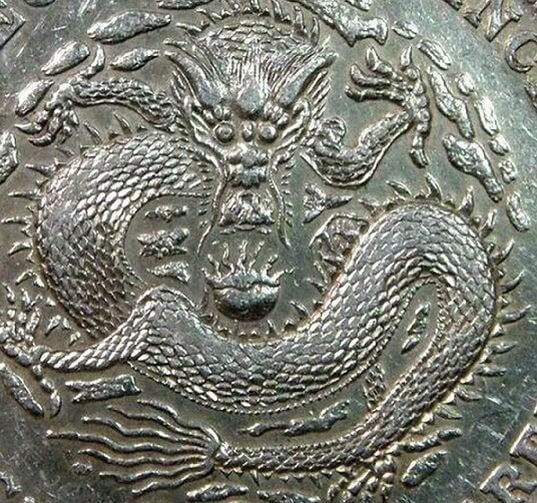
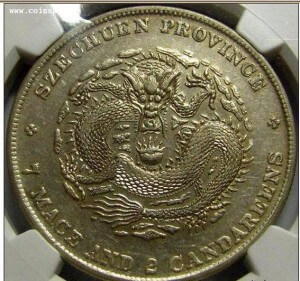
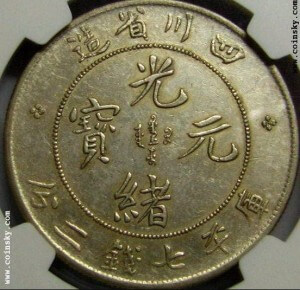
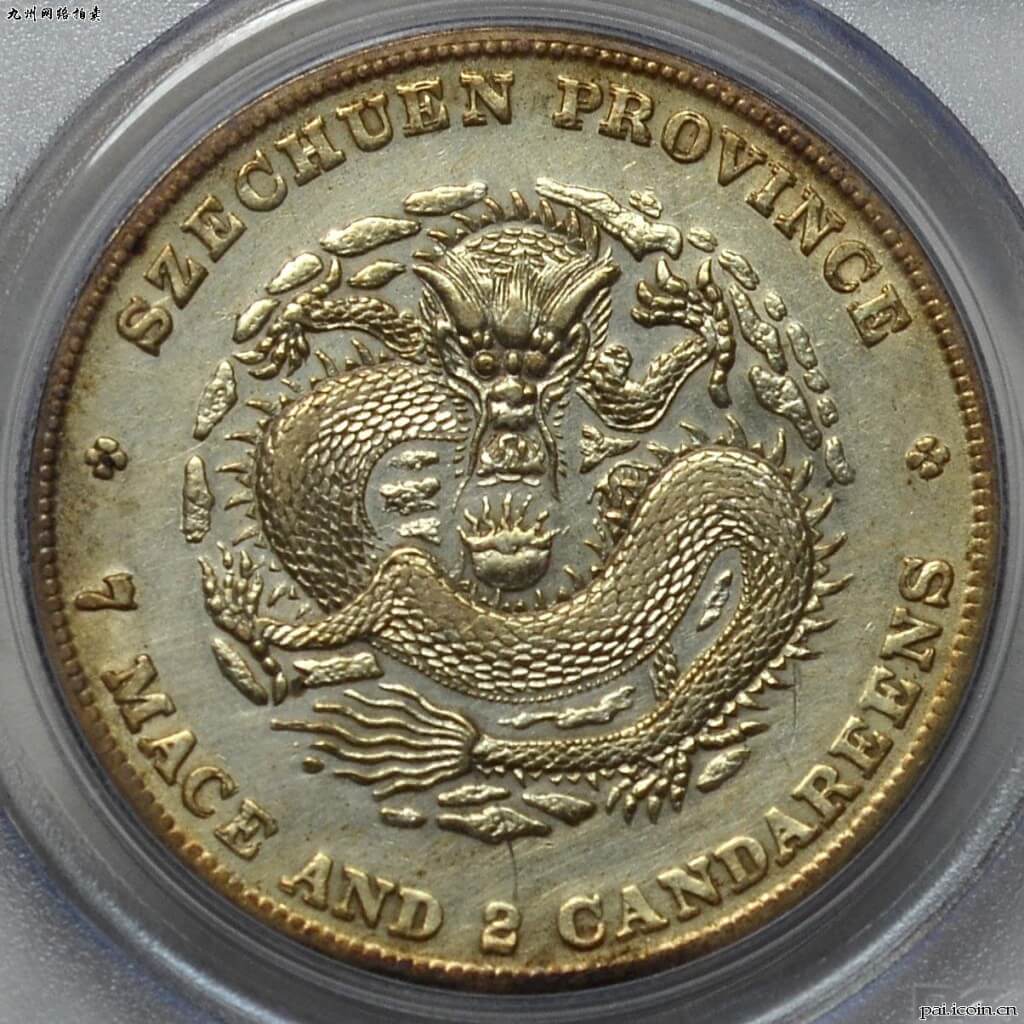
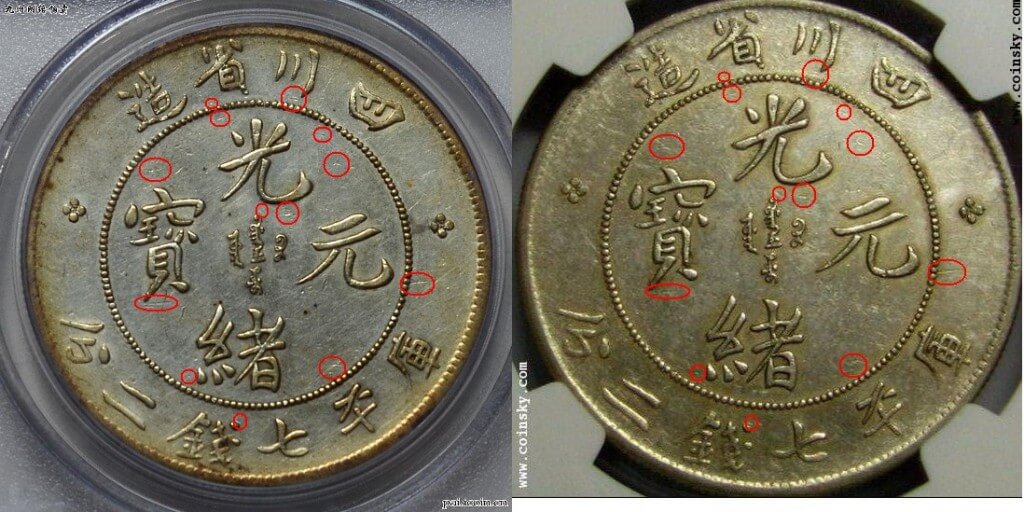
Hi,
I just found your site tonight and am very happy I did. I purchased 7 Chinese coins in Burma in the 1970′s from an old lady whom my employee knew. She was not a dealer in fact in need of the money. She had them wrapped in an cloth and dug them out when we arrived. I may have fallen for an elaborate ruse but I paid an amount, I don’t even recall how much.
I got them out tonight becauase an annoucement was just received from American Federal R$are Coin & Bullion that they would be in my little town and would like to purchase Chinese Coins!! Strange! The coins were in a basket with many other coins resulting from my travel in 90 countries during my career. The coins are dirty but you article tells me I should not try to clean them.
Would you like to see pictures? How can I have them appraised?
One reads 29th year of Kuang Hsu Pei Yang, Two Szechuen Province , 7 Mace and 2 Candareeens but the reverse is differant, one Tai-Ching-TI-Kuo Silver Coin, another has no English on either side , another seems to be a Empire coin as it looks like Chinese on the obverse and arabic on the reverse, the last is a one dollar coin with an image of apollo on the obverse and Chinese characters on the reverse.
Thanks for your response.
Jim Edge
Hi Jim, I will be pleased to have a look at your coins, especially with this interesting provenance. You can either send pictures in reply to the e-mail I sent you, or use the appraisal form here:
http://www.dragondollar.com/coins/coin-appraisal-what-is-your-chinese-coin-worth/
Hi,
It is great that you found the forgeries. I thought the price for a au50 szechuan for 16,500 us dollars is really high. You can buy and ms 62 for less than that. Also, most likely the pcgs folders that you saw are fakes too. The pictures of the coins on your website are fake. Unfortunately, I ran into a buzz of fake high grade coins. Now, i can recognize fake coins instantly.
Hello John, you are correct that $16,500 USD would be much too high for a common variety. The 無頭車 variety is both very popular and rare however, so it sells for higher prices; especially as there is only a handful specimen in AU or better grade. Knowledge of the varieties is essential for collecting Szechuan coins, as there is about 200 of them and their price can literally vary an order of magnitude.
What is this coin worth now?
Hello Peggy, prices have remained stable since then, but varies greatly according to condition. If you are unsure about the condition of your coin, you can send it to PCGS for grading.
How i to know that is my coin is real or fake? can you take a look my coins?
I could really use your help finding out if my coin is genuine or a fake.
I have purchased a goodly number of Chinese provincial silver the past 15 months. I got stuck with a few counterfeits in the early going but have gotten pretty good in seeing obvious fakes. One of the best ways is weight. But – I have ended up with a few that were just a little underweight that appeared to have flat darkened edges. I am wondering if many years ago some crafty Asian shaved off some silver from the edges for melt and that could be why some coins exhibit these features but are nonetheless genuine ??